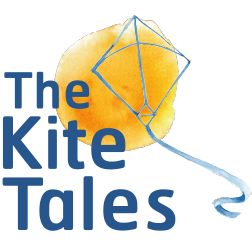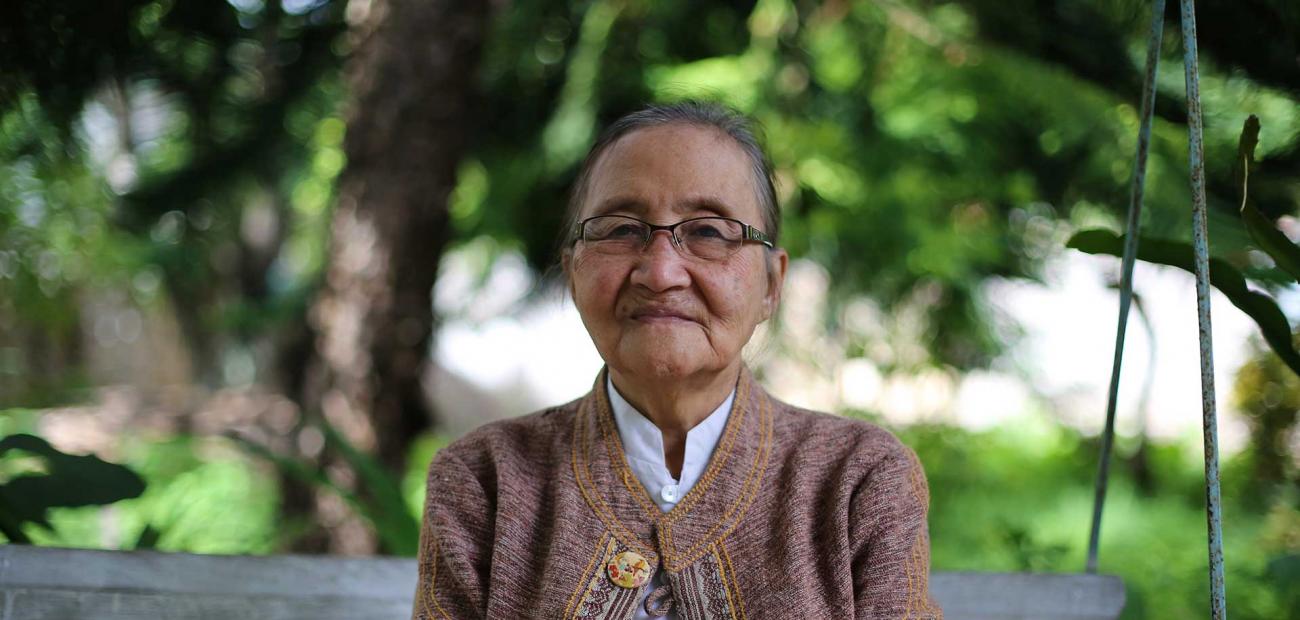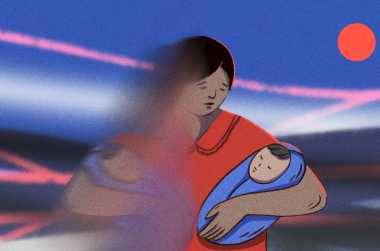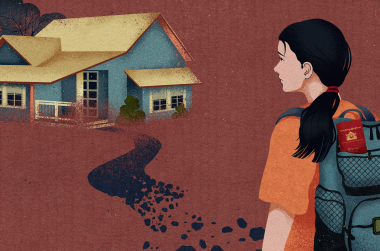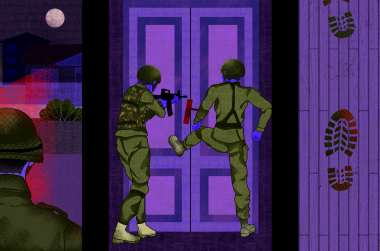A companion story with recollections of ordinary people who visited the palace in its heyday can be found here
When she was a little girl, Sao Haymar Thaike was a princess in a palace. Its elegant gardens were her vast playground, its visitors her accommodating playmates and the lavish ceremonies it held made her feel at the centre of community life.
Now in her seventies, her only privilege when she visits the old palace is that the clerk on the door waives her entrance fee, so that she can walk its halls among strangers and mark its slow disintegration.
But the more she sees, the more Haymar is determined to reclaim a heritage site snatched following the military coup that left her father and brother dead and her family scattered to the winds.
“Everybody knows that it's our home,” she says of the Nyaungshwe palace, or “haw”, in Shan State.
From her modest bungalow on a quiet backstreet in Shan’s mercantile mountain capital Taunggyi, Haymar is quietly fighting to recover a lost legacy.
Her unassuming current home, with its swing seat on the porch and pack of excitable dogs racing through the neatly tended garden, is in many ways perfect for a woman who spent years under military rule in studious avoidance of attention.
But among the fading family photographs on the peppermint walls inside are formal portraits of princes and princesses and of her father Sao Shwe Thaike, Sawbwa of Nyaungshwe, one of the Shan Lords of the Sky and also the first president of an independent Burma.
“The Sawbwas are the lords of the sunset. So from 6 o'clock at night they had music,” Haymar says, remembering a way of life, already changing when she was young, but completely extinguished with the coup.
The stately wood and brick Nyaungshwe Haw was forcefully nationalised by the military, which then let it fall into disrepair.
Today, it is weather worn and shabby and the tourists who flock to Nyaungshwe by the thousands to see the glassy beauty of Inle Lake barely know of its existence. Those that do visit complain of its neglect.
Haymar’s chief concern now is how to get it back.
With many in her family dead or in exile, she is their last hope to bring the old palace back to life and once again put it at the centre of the local community.
“It’s only me” she says, lacing her fingers together on her lap and smiling firmly.
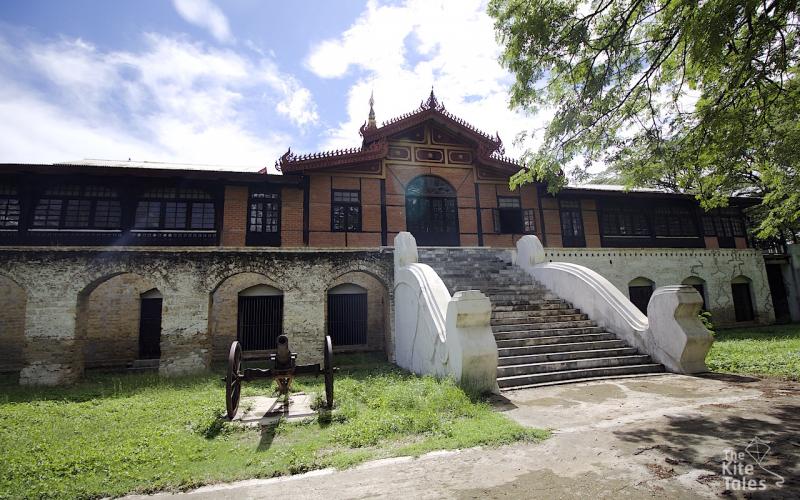
It was during annual festivals, like the water-throwing New Year celebrations of Thingyan, that the palace really came to life.
“They came to the residence and we had to feed the whole town, a big occasion,” she says, adding that only those over 80 might remember it.
According to Shan tradition, the actual water-throwing was reserved for New Year itself, lending the day a special exuberance -- particularly for small royal children.
“We are very naughty. What we did, we hid their umbrellas, we hid their slippers and only if we could throw water on them, would we give it back,” says Haymar.
Sao Shwe Thaike had five wives, 11 children -- seven boys and four girls -- and a large extended family, so Haymar’s most vivid memories are of games played with her siblings among the great trees that towered over the lawn like silent watchmen. The compound, with its tennis court, horse stables and wishing well, was a seemingly endless playground.
“With hide and seek, we had to restrict the area, or we can't be found,” she says.
“All together we are a big family, so we weren’t lonely.”
Despite the complexities of the family structure, Haymar says the siblings and half-siblings got along well and were treated equally by their father.
“He doesn’t neglect any of us. And what he would tell us is ‘share’. If you had chocolate — to share, not to be greedy. And we meditated from a young age, on the principles of Buddha.”
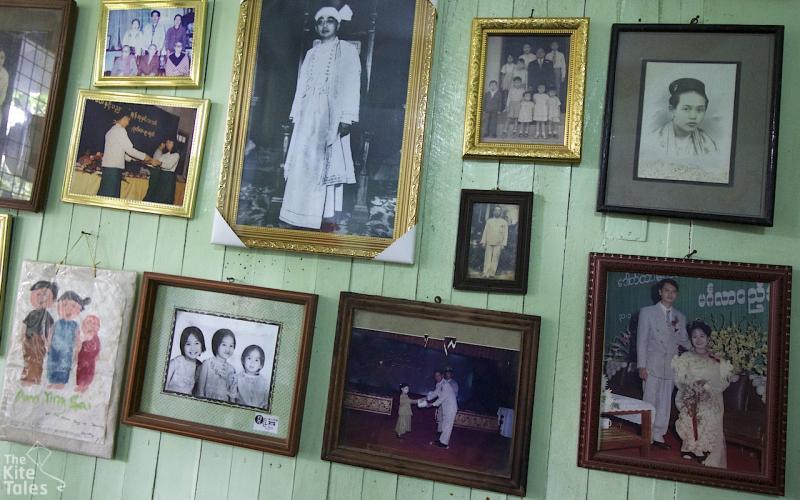
The Shan States, a collection of principalities with interlocking loyalties on the border with Thailand, wielded great influence on the nation. With its centuries of proud tradition, a thriving literary heritage in its Tai language and a landscape on the Shan Plateau of breathtaking hills and gorges, the region is fortified by a sense of self-sufficiency.
Under colonial rule Shan was part of the so-called Frontier Areas and endowed with a modicum of autonomy. But after World War II swept through the country and independence calls reached their peak, there was a recognition that the old style of hereditary rule was coming to an end.
The 1947 agreement between many of Myanmar’s larger ethnic groups, which paved the way for independence, was hosted by the sawbwas in the tiny village of Panglong, some 100 kilometres from Taunggyi. The representative of the country’s Bamar ethnic majority at the conference was Aung San, the independence hero and father of Haymar’s childhood friend, Aung San Suu Kyi.
The assassination of Aung San just months before independence foreshadowed the chaos and bloodshed that was to come for Haymar’s own family.
Unshackling from colonial rule brought great changes.
Sao Shwe Thaike became the country’s first post independence president, moving to Yangon to steer a delicate and fleeting period of political freedom in what was then called Burma.
“He was a good ruler and he loved the people in Shan State,” Haymar says of her father.
The 1950s saw Shan’s sawbwas cede power to a new regional government as the country sought to modernise.
But the family still had the haw.
MiMi Khaing, the Yangon and London educated wife of Sao Saimong (son of the chief of Kengtung) published a series of articles on the Shan States of Burma during the 1950s. In one she included a vivid description of the Nyaungshwe Haw, built in the style of the palace at Mandalay, which had been destroyed during the war.
“Visitors should not miss a sight of it,” she wrote of the palace, with its grand audience hall and four wings for living quarters “to house, if desired, the queens of the north, south, east and west”.
“The great space of the throne rooms with their highly polished floors, raised dais, lofty pillars, are perhaps the only example in Burma today which can hint at the splendours which have fallen into dust and ashes,” she wrote.
“The unfinished ramparts which suggest castle ruins as you drive in are said to be left thus owing to the belief that the completion of a Haw is the completion of the dynasty. Actually, the Sawbwa who is at present the President of the Union, can safely finish his Haw. His two adult sons are, in the opinion of this writer, intellectually the fairest flowering among the Saos or even of all the Shans of today; and he has five or six more in the Presidential House to follow.”
It seemed as if the family’s prosperity was assured.
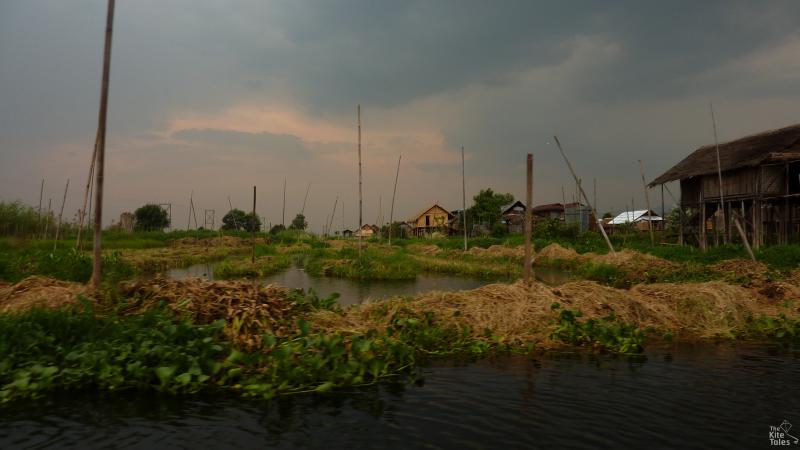
Sao Shwe Thaike served as president until 1952, after which he stayed in politics with roles in parliament as speaker and president of the Upper House before retiring in 1960.
But the country’s conflicts and power struggles would soon bring tragedy to his household.
The fledgling democracy was increasingly unsettled by a communist insurgency from the northern border with China and growing strife in ethnic areas. This saw the army deployed across the country and severely weakened the government’s authority.
In 1962, army chief Ne Win saw the instability shuddering across the nation as an opportunity to seize power.
“On that night, I was not there. But according to (her half-brother) Harn, it was like a murder.”
In the early hours of March 2, soldiers surrounded the family home in a sleepy part of Yangon and opened fire. Haymar’s half-brother, 17 year-old Sao Myee Myee Thaike, was shot and killed in his pyjamas.
Sao Shwe Thaike was arrested and held in “protective custody” by the military. He died in jail eight months later.
The army tracked down other Shan hereditary rulers too. Sao Kya Seng, of Hsipaw was arrested on his way to Taunggyi, according to an account by his Austrian wife Inge Sargent in her book ‘Twilight Over Burma’. He was never seen again.
During the coup the military had asked about the whereabouts of Sao Shwe Thaike’s last wife -- the Mahadevi of Yawnghwe (Nyaungshwe), who was mother to six of his children and was in Englad at the time. She had been a Member of Parliament for Hsenwi from 1958 to 1960, and had made enemies by asking probing questions that highlighted Tatmadaw misconduct in Shan State.
In the years following the coup, the mahadevi’s side of the family fled into exile. Their Yangon home was taken by the generals -- a large apartment block and shopping centre development now stands on the site.
Haymar stayed in Taunggyi with her own mother, a respected teacher who died in 2014. She worked for the American embassy for a while and even ran a guesthouse, although she tried to avoid political conversations with the odd intrepid tourist who punctured the isolation imposed on the country by the military.
“I think if you are not in with politics, they leave you out. I stayed low. People knew me but I feared for my safety,” she says.
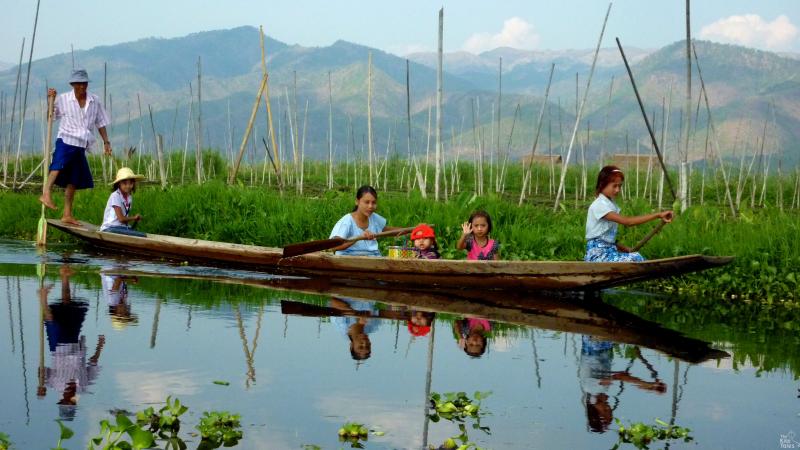
The Nyaungshwe Haw was snatched in 1964.
“When they took it, it was just like that. No paper involved. So we cannot show any paper, but the world knows,” Haymar says.
Despite its decline, the haw faired better than other stately residences and was one of the very few Shan palaces to survive the last century.
“Some families for problems of survival, sold (their palaces) to the government. Some gave them as a donation to the monastery,” Hay Mar says.
The palace at Kengtung was also forcibly nationalised and later demolished by the authorities in the 1990s.
During the decades of government ownership, the military filled the Nyaungshwe Haw with sanitised “cultural” exhibitions.
Artefacts were donated by some of the Shan royal families, but many of these were hidden away in Naypyidaw and some are still missing. The government even at one point filled the haw with Buddha statues — presumably to neutralise a potential site of Shan nationalist pride, or silence any complaints about the mismanagement of a historical monument.
When Suu Kyi’s government took power in 2016, Haymar hoped that her efforts to retake ownership of the haw would be more successful. But progress has been painfully slow.
Haymar still takes the odd visitor to wander through the halls of her old home.
The state of the building alarms her, particularly one area used to display the fraying traditional costumes of the sawbwas, where the floor has become so unstable that to walk across it is like traversing the deck of a ship in choppy waters.
“I think that’s going to crumble down, that room. I mean sometimes I feel giddy. I can’t move here and there,” she says.
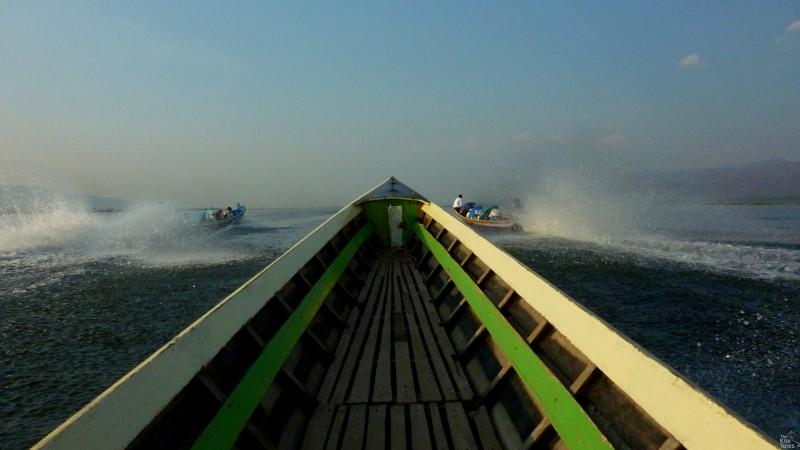
In recent years she has sought help from restoration experts in Yangon over a growing number of structural ailments. They are focusing on trying to rectify a botched renovation two decades ago when she says the government reinforced part of the flooring with concrete, undermining the foundations. Part of the building has sunk by six inches, she says.
Haymar now heads up a committee on the future of the haw and travels frequently to Nyaungshwe.
They have had some successes, convincing authorities to abandon plans to turn the grounds into a market and to give them permission to raise a statue nearby to honour her father.
“I can’t do much even if it is very tiring. We’ve asked for the building back but we haven’t got it, so we’re just trying our best with it,” she tells us in a recent update.
Haymar wants to set up a foundation to fund the urgent repairs and dreams of putting the building back at the centre of local life.
“We would try and make this into a world-class museum. I also want to make a youth centre, where you can hold meetings. And a garden. A recreation centre of some sort too,” she says.
She has petitioned Suu Kyi for help. But the government is distracted with myriad challenges and she is still waiting for a date to travel to Naypyidaw to put forward her plan.
“I’m waiting for her to call. I would like to speak to her,” she says.
(We interviewed Sao Haymar Thaike initially in June 2016 and then several times since, most recently December 2019)
This story was edited on January 9, 2020 to clarify that Inge Sargent is Austrian
